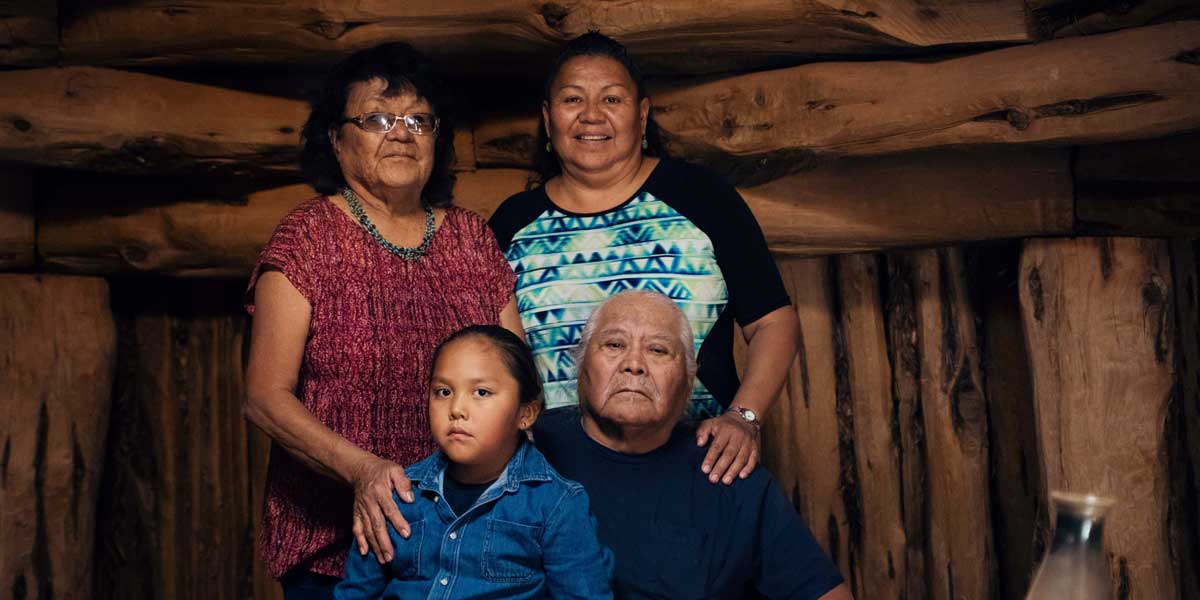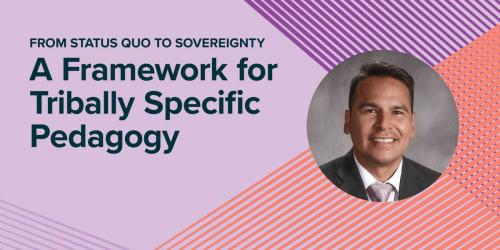Ways to Become More Culturally Responsive in Engaging American Indian and Alaska Native Families

In Part 1 of this blog series, I wrote about how American Indian and Alaska Native communities in the Northwest are becoming more empowered in education.
I also wrote about how culturally responsive systems are the key to improving outcomes for American Indian and Alaska Native students in school and in life.
Based on the perspectives I shared in Part 1, here are ways schools can become more culturally responsive and welcoming to American Indian and Alaska Native families and communities:
Center Cultural Responsiveness on Youth, Families and Elders
It’s important for us, as educators, to determine ways to engage with the teaching and learning process within cultural frameworks. We also need to examine our own perceptions and biases.
In the work I’ve been fortunate to do across Indian Country, I have found that the communities we serve want us to be youth centered, family driven and elder guided. They also want us to engage with them authentically through ongoing outreach, community-based connections and relationship building. These are good ways for educators to start becoming more culturally responsive.
Make Cultural Connections Across the Curriculum
What our families know about our schools comes from what content we teach, the way we teach, how we transmit knowledge and whether we do so in culturally responsive ways.
Research has shown that disparities between the cultural values and communication patterns of the home and the school may undermine children's enthusiasm for learning and their belief in their own capacity to learn.
To validate students' experiences and promote learning, it’s best to avoid texts, holidays/celebrations and classroom materials that trivialize the Native experience. Also, watch out for tokenism, omission/selectivity, inaccuracies or biased language and content in teaching materials.
Adopting elements of indigenous teaching and learning modalities is one way to honor Native students’ cultures. For example, creating apprenticeship opportunities for students to learn from adults, providing space for cooperative learning and teaching students to demonstrate learning and mastery in authentic ways are all indigenous education methods, and they can help ensure—in culturally responsive ways—that our young folks are mastering content.
Like all families, American Indian and Alaska Native families want teachers to cover the appropriate content. They also want to make sure their children are receiving an equitable education and that they are in learning environments that honor who they are and where they come from. For indigenous families, this is particularly important because so much of their history was ignored or intentionally removed from curricula for so long.
Understand the Lingering Trauma of the Boarding School Era
People are still living with intergenerational trauma from the forced removal of children from their families, as well as attempts to use public education as a vehicle to destroy American Indian and Alaska Native culture and language. The impacts of this horrendous period still loom large and simply cannot be ignored.
I once heard Seattle Public Schools Superintendent Denise Juneau (Mandan/Hidatsa) say that people are fearful of losing another generation of young people and that education is our best way to prevent this. The key is for schools to continue to meet us where we are and build a better understanding of cultural frameworks and the lenses through which we view and live in the world.
Make Culture Visible
What is the immediate reaction of American Indian and Alaska Native families and community members when they come to your schools? Are components of indigenous culture reflected in the hallways, artwork and/or classrooms?
When you use learning spaces to make connections to your students’ cultures, you are creating a welcoming environment and recognizing where your students and families are as people.
Train all school staff members on American Indian and Alaska Native culture. The tribal community would like to see substantial and ongoing training on history, culture and contemporary issues for all school staff members. This includes partnering with tribal experts who can provide significant expertise in areas such as science, health and nutrition, and government. It’s important for schools to show the tribal community that they are continuously trying to get better at being more attuned to and inclusive of students’ cultures.
Facilitate Language Instruction
One of the biggest ways to demonstrate a commitment to an indigenous community is to facilitate language instruction across the district. As more and more indigenous languages become endangered, schools’ efforts to protect and sustain them can go a long way toward engaging indigenous families and communities around a topic that is important to all stakeholders.
Make Time for Introductions
When gathering families and/or community members, spend as much time as is needed for everyone to introduce themselves. Let people say everything they want to say, and if it takes longer than you expected, that’s okay. When school staff members show they are good listeners and practice patience, it can go a long way toward making connections and building relationships.
Provide a Seat at the Table
It’s important to facilitate meaningful consultation with American Indian and Alaska Native families, community members and tribes. Consult early and often, even when it might not be easy. Not only is this a requirement for federal funding, it’s the right thing to do.
Remember: Getting involved or being valued as a participant in public education is still a new endeavor for many indigenous communities.
To support them, create as many opportunities as you can for engagement, maintain ongoing conversations and exercise patience while people learn the system and its priorities and jargon. In addition, make time to debrief after meetings so people can get answers to all their questions.
We are in an exciting place where we can create a new paradigm that will benefit all students—not just American Indian and Alaska Native students—by building a greater sense of compassion, inclusion and community in our schools.



